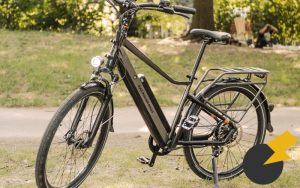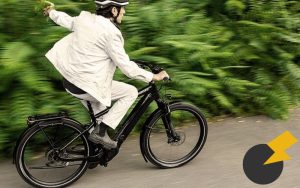Imagine this: you’re travelling along a mountain pathway with the blowing wind in your hair and the sunrays on your face. You’re not pedaling as hard as you typically would, and yet you’re still going fast. How is this possible, you question? It’s all with the help of the magic of e-bikes!
Or imagine this: it’s Monday morning hours in Edmonton, and you’re running late for work. You’re dreading the lengthy commute in front of you, however then you just remember your dependable e-bike. With a grin on your face, you get on and set off, leaving the stress of rush hour traffic behind.
E-bikes are like typical bicycles, but with a jazzed-up secret weapon: an electric engine. This indicates you can deal with high hills, headwinds, and long distances with ease, without breaking a sweat (unless, of course, you want to). You can go longer, quicker, and discover more places than you ever could on a regular bike.
However don’t let the electric powered motor unit fool you – using an e-bike is still an adventure. You’ll experience the wind rushing by as you whisk along, and you’ll still get a great workout if you want one. Plus, you’ll be doing your part for the planet by selecting a method of transportation that doesn’t rely on nonrenewable fuel sources.
So regardless if you’re looking to explore new routes, travel to work minus breaking a sweat, or simply take pleasure in the freedom of two wheels, an e-bike is an awesome and exciting means to do it. So step on and let the electric engine take you on a trip you’ll always remember!
Best E-Bikes in Edmonton

As North America's largest electric bike brand, Rad Power Bikes is constantly redefining the way people and goods move with a dedicated team that designs e-bikes that can be used for anything and are affordable.
Save Big On These Limited Time Offers

Although Pedego believes in excellence and quality (a belief backed up by the manufacture of high-quality bikes), they place a much higher premium on people. With Pedego, you have a company that stands for you!

Biktrix is devoted to manufacturing electric bicycles that are affordable yet exhibit high performance. Bikes that are more convenient, more efficient and more affordable option.
What Is An E-Bike?

Types Of E-Bikes Frame Designs
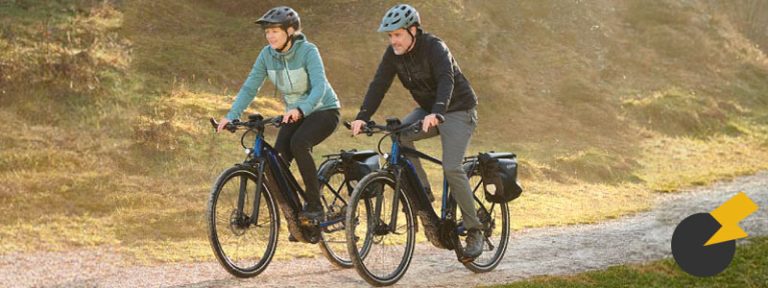
E-bikes are available in numerous shapes and sizes, with frame design being a crucial factor in comfort, stability, speed, and handling. Among the most typical e-bike frame styles consist of step-through, step-over, mixte, folding, cruiser, and cargo frames.
Each type caters to different riding styles and choices, making e-bikes a flexible mode of transportation. Whether you’re seeking a comfortable, kicked back trip or a sporty, performance-oriented machine, there’s an e-bike frame style that’s best for you.
- Step-through frame: As the name suggests, this frame has a low or angled top tube, making it easy for riders to step through and mount the bike without having to swing their leg over the frame. This design is popular among riders who want a more comfortable, relaxed riding position or who have mobility issues.
- Step-over frame: This is the traditional bicycle frame design, with a high top tube that requires the rider to swing their leg over to mount the bike. This design is popular among road cyclists and riders who prefer a more aggressive, sporty riding position.
- Mixte frame: This is a variation of the step-through frame, with a partial top tube that extends diagonally from the head tube to the seat tube. This design provides additional support and stability while still allowing for easy mounting.
Folding frame: This frame is designed to be compact and portable, with features like smaller wheels and a frame that can be folded up for storage or transportation. Folding frames are a great option for commuters or riders with limited storage space. - Cruiser frame: This frame has a relaxed, comfortable riding position with wide handlebars, a plush saddle, and a laid-back geometry. This design is popular among riders who prioritize comfort and style over speed and performance.
Fat tire frame: This frame is designed for off-road riding, with extra-wide tires and a sturdy frame to support the weight of the rider and provide greater stability on loose surfaces such as sand or snow. - Cargo frame: This frame is designed to carry heavy loads, with a longer wheelbase and a sturdy frame to support the weight of cargo or gear. This design is popular among commuters and delivery riders who need to carry items with them on their bike.
These are just a several examples of e-bike frame designs, and there are numerous variations and combinations of these styles. Choosing the best frame design will depend on your personal riding style, needs, and preferences.
Who Can Use An E-Bike?
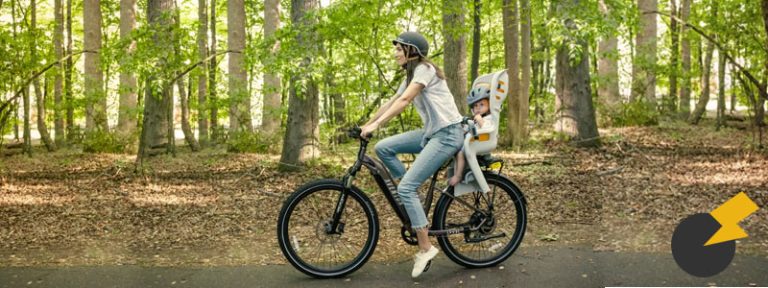
In general, anyone who can ride a regular bicycle can use an ebike. However, the specific rules and regulations governing using ebikes vary by country and even by state or province within nations.
In a lot of places, there are no age constraints for riding an ebike, although some jurisdictions might have specific age limitations for certain kinds of ebikes, such as those with greater speeds or more effective motors. Furthermore, many countries need using helmets while riding an ebike, and some jurisdictions may also need a valid driver’s license or permit.
It’s important to look into and understand the specific guidelines and regulations in your area prior to buying or using an ebike. In addition, it’s always a good idea to wear protective gear like a helmet and follow safe riding practices, including following traffic laws and using appropriate signs when turning or stopping.
E-bikes can be utilized for a variety of functions, consisting of:
Commuting: E-bikes are an excellent option for travelling to work or school, providing a much faster, simpler, and more environmentally friendly method to navigate. They can assist riders prevent traffic congestion, reduce transportation costs, and improve overall health and well-being.
Recreation: E-bikes are an enjoyable and amazing way to explore the great outdoors, whether it’s travelling along scenic routes or taking on challenging mountain terrain. They can assist riders cover more ground and reach new destinations that may have been out of reach with a traditional bike.
Exercise: E-bikes can provide a low-impact, cardiovascular exercise that’s easy on the joints and suitable for riders of all ages and fitness levels. They can help riders enhance their overall fitness and health, and can be used for both leisurely rides and more intense exercises.
Errands and shopping: E-bikes are an useful method to run errands and do shopping, offering a method to bring groceries, supplies, and other items without the requirement for a vehicle. They can also help in reducing traffic congestion and improve air quality in urban areas.
Tourism: E-bikes are a popular option for travelers who want to check out a different city or town at their own pace. They can provide a distinct and immersive method to experience regional sights and attractions, without the requirement for a vehicle or public transit.
Overall, e-bikes are a versatile and practical mode of transportation that can be utilized for a wide variety of functions, making them a terrific investment for anybody looking for a fun, eco-friendly, and effective method to navigate.
Classes Of E-Bikes In Canada
In Canada, there are three classes of ebikes, which are defined by the federal government:
Class 1 e-bikes
Class 1 e-bikes are pedal-assisted electric bicycles that can provide assistance up to a maximum speed of 32 km/h. They do not have a throttle, and the motor only operates while the rider is pedaling. Class 1 e-bikes are treated as bicycles under Canadian law and are permitted to use bike lanes and other cycling infrastructure.
Class 2 e-bikes
Class 2 e-bikes are also known as throttle-assisted e-bikes, as they can be propelled by a motor using a throttle without pedaling. They are also capable of being pedaled like a traditional bicycle. Class 2 e-bikes can provide assistance up to a maximum speed of 32 km/h. Like Class 1 e-bikes, they are treated as bicycles under Canadian law and are permitted to use bike lanes and other cycling infrastructure.
Class 3 e-bikes
Class 3 e-bikes are similar to Class 1 e-bikes in that they are pedal-assisted and can provide assistance up to a maximum speed of 32 km/h. However, Class 3 e-bikes are equipped with a motor that can provide assistance even at speeds above 32 km/h, up to a maximum speed of 45 km/h. As a result, they are not permitted on bike paths or other cycling infrastructure that is designated for bicycles only. Riders of Class 3 e-bikes must be at least 16 years of age, wear a helmet, and follow the same rules of the road as motor vehicles.
Each province or territory may have their own rules and regulations regarding e-bikes, so it’s always a good idea to check with your local authorities to ensure that you are following the most up-to-date regulations.
Electric Bike Financing In Canada
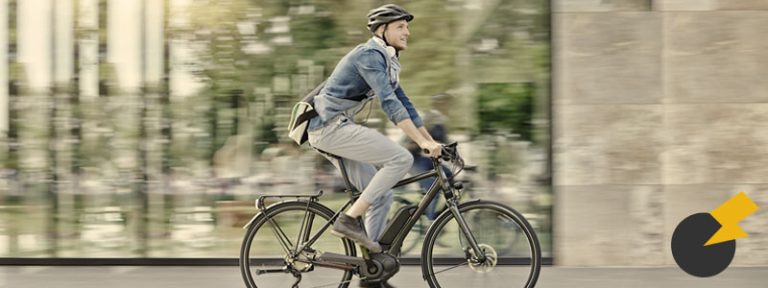
There are several options for financing an e-bike in Edmonton, Canada, suching as:
- Manufacturer Financing In Canada
Some e-bike corporations offer financing options through partnerships with financing organizations. These financing alternatives can differ, so it is essential to talk to the particular producer for details. - Bicycle Shop Financing:
Many bike stores offer funding options for e-bikes, either through collaborations with funding companies or through in-house financing. These alternatives can vary, so it is essential to contact the particular purchase information. - Personal Loans
It’s likewise possible to fund an e-bike through a personal loan from a bank or other banks. These loans can be used to acquire an e-bike, and the conditions can differ depending on the lending institution. - Credit Cards
Some credit cards provide financing possibilities for big purchases, including e-bikes. These options can vary, so it is essential to check with the specific credit card provider for information.
Prior to financing an e-bike, it is necessary to consider the rate of interest, payment terms, and any additional costs associated with the financing option. It’s likewise important to ensure that the e-bike being acquired is a great fit for the rider’s requirements and budget.
FAQ
Yes, e-bikes in Dryden, Canada are a great option for commuting, as they are efficient, cost-effective, and environmentally-friendly. Many cities in Canada have bike lanes and other infrastructure to support commuting by e-bike, and some employers offer incentives or amenities for employees who bike to work.
Explore

As North America’s largest electric bike brand, Rad Power Bikes is constantly redefining the way people and goods move with a dedicated team that designs e-bikes that can be used for anything and are affordable.
Save Big On These Limited Time Offers
-
Alberta gig workers push for recognition as unstable incomes, burnout take toll | Globalnews.ca
Source: e-bike alberta Published on 2025-12-12
-
Lethbridge Marks Milestone as Alberta’s First Community to Complete Curbside Battery …
Source: e-bike alberta Published on 2025-12-09
-
Alberta government asks for Calgary bike lane data to understand impacts to traffic
Source: e-bike alberta Published on 2025-12-09
-
Central Alberta municipality’s office expansion plans proceeding – The Albertan News
Source: e-bike alberta Published on 2025-12-07
-
E–bike bylaw in the works in Carstairs – The Albertan
Source: e-bike alberta Published on 2025-12-03
-
E-dirt bikes illegal to use within Lethbridge city limits, police warn – CTV News
Source: e-bike alberta Published on 2025-11-29
-
Clean Up Underway After Train Derailment Near Champion – Bridge City News – November 28, 2025
Source: e-bike alberta Published on 2025-11-29
-
Woman wins e–bike for using Regional District of Central Okanagan’s pop-up recycling depots
Source: e-bike alberta Published on 2025-11-05
-
MLA honours Lacombe Police Service for reaching milestone – Penticton Herald
Source: e-bike alberta Published on 2025-11-04
-
N.W.T. day homes told they can follow Alberta’s lead on voluntary fees – Penticton Herald
Source: e-bike alberta Published on 2025-11-04
-
Closer to home Bonnyville Community Cancer Clinic serves patients across the Lakeland
Source: e-bike alberta Published on 2025-11-03
-
‘Moving mountains not always enough’ to bring home Indigenous family members – Penticton Herald
Source: e-bike alberta Published on 2025-11-03
-
Girl injured by balaclava-clad e–bike riders – Yahoo News Canada
Source: e-bike alberta Published on 2025-11-01
-
Alberta teachers say fight just begun but will follow the law in back-to-work bill
Source: e-bike alberta Published on 2025-10-28
-
Election delays? Those are on you, UCP tells Alberta municipalities – Penticton Herald
Source: e-bike alberta Published on 2025-10-27

